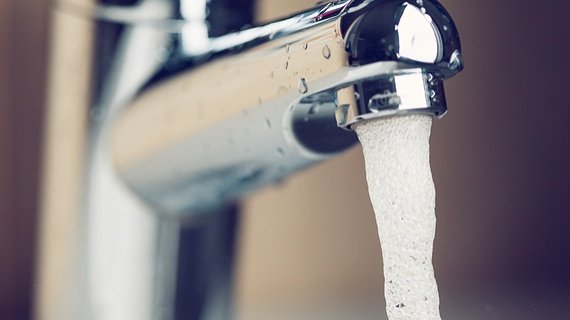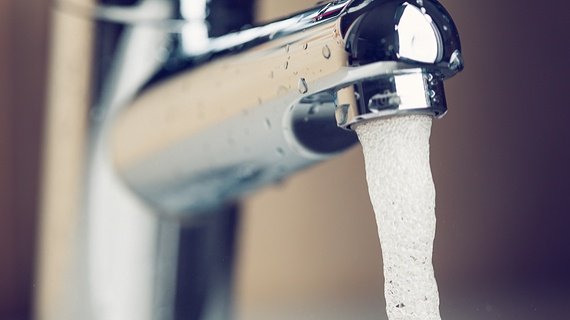
Temperature plays a pivotal role in determining whether or not legionella bacteria will come to bear within a water storage environ. By establishing the true water temperature (or more pertinently, the fluctuation of temps) you'll have a significantly clearer indication of what chances waterborne bacteria will be afforded, as they seek out the foothold they crave in order to propagate.
Thankfully, measuring the temperature in a stored water setting couldn't be more straightforward to undertake either. Yet priceless in offering you something akin to an advanced warning system, if you like. Rudimentary legionella thermometer kits available today come complete with an immersion probe, which actively encourages the user to dip the temperature probes into cold water storage tanks, as well as beneath running water taps if so required.
Providing the facilitator the wherewithal to penetrate the aforementioned probe to a depth of at least 25 millimetres. The depth at which the test needs to be conducted to ensure that the correct water temperatures are recorded then and there.
Most thermometers of this type are also engineered in such a way which enables the user to gauge the temperatures of water located within a range of pipes, tanks and air bodies typically situated in such infrastructures. By virtue of being fit for purpose, dedicated legionella thermometers are both water resistant and damage proof, and also tend to possess a lengthy battery life.
BrodexTrident offer our own bespoke legionella testing kits, which are readily available for our clients to purchase via the Request A Quote section of our website. These specialist kits represent the very latest in water treatment technology and prove very popular among our historic client base.
But Do I Really Require my Own Thermometer for Legionella Testing Purposes?
That very much depends on the individual approach to legionella control and management protocols and practices, which were rolled out in the immediate aftermath of the performing of legionella risk assessments. Which should always stand as the starting point when ascertaining the risk posed by the bacteria and according to the structure and uses/outlets frequented by specific operators.
Whichever way you choose to address the issue of legionella - and its subsequent more health-compromising furtherance, the potential for Legionnaires' disease - a legionella thermometer testing kit ultimately helps to prevent the bacteria from forming from the outset, or at the very least, alerts you to its presence in the event that the contaminant has already manifest within a water storage system previously.
What About in the Eyes of the Law?
Compliancy is key and that's also where the Approved Code of Practice (ACOP) comes to the fore. Implemented by the government, this regulation exists to ensure that accurate temperature readings of stored water in a variety of commercial and industrial settings must be taken.
In addition to this, the Health & Safety Executive (HSE) goes on to outline how potential risk from exposure to legionella bacteria must be systematically guarded against. The overriding objective being to control the potential spread of bacteria by acting to prevent the conditions that encourage the growth of legionella within a stored water system.
Aside from the obvious good practice, it stands as a legal requirement to ensure that water temperatures are accurately recorded (specifically looking to avoid the legionella 'danger zone' widely acknowledged as being between 20°C and 45°C). And arguably the best way of constantly monitoring a water system is via calibrated legionella thermometers.
What Physical Shape do Legionella Thermometers Take?
It's pretty safe to say that a typical legionella thermometer doesn't share any similarities with a conventional human thermometer. The sort our parents always kept in the bathroom cabinet in the family house when we were young. Instead it physically appears more akin to Dr Who's Sonic Screwdriver in many of its more common guises. Attached at the other end to a piece of kit (the actual measuring part) which closely resembles a cross between a calculator and a traditional stopwatch device.
However exterior demeanour apart, a legionella thermometer is specifically designed and engineered to test water temperatures as part of an on-going plan to thwart the proliferation of legionella bacteria as we've already established. Such thermometers are presented with different accessories, all of which enable the taking of water temperatures, including in tanks and pipes. Moreover, in a timely and straight-forward manner. In addition to this, they are also crafted in a way that champions use even when the stored water situations are awkward and/or challenging to reach.
In terms of aesthetical design, we're usually talking about a digital legionella thermometer kit comprising any or all of the following individual criteria; a penetration probe (or sensors), a wire probe (or sensors), a thermal thermometer element, a set of batteries, a carrying case and a tub of wipes. On the subject of probes - the key point of contact between the tech and the water - there are a number of alternate products on the market. For example, dual purpose surface/immersion probes can be used for both surface measurements on pipes and calorifiers, as well as running water from taps and showers. Thus eradicating the need to switch between different probes.
Can You Explain Just What the Optimum Temperatures In Terms of Hot and Cold Water Systems Within a Property?
Addressing cold water outlets first, the water temperature at the point of testing, must be recorded as being BELOW 20°C within 2 minutes of legionella thermometer dipping. Conversely for hot water outlet, the litmus test as such is the water being ABOVE 50°C within 1 minute of temperature measuring, or 55°C for healthcare environments such as hospitals, care homes and dental clinics. Addressing the alternative topic of hot water storage (calorifiers/water heaters), it's imperative that stored water must be a MINIMUM of 60°C or higher.
Is There Anything Else I Should Be Made Aware of Before Investing in a Legionella Thermometer for Testing Purposes?
Yes, the not inconsequential matter of calibration of testing equipment. Essentially this refers to the defining of the overall quality of the recorded temperatures found in the stored water facility; wherever it may exist. With a dedicated legionella testing thermometer (or any other equipment designed for a similar nature) ideally being pre-calibrated to cover all eventualities. Over time, there is often a tendency for the result to drift; with other factors coming into play such as both temperature humidity or human error. Ergo the calibration helps to reduce any uncertainties associated with the testing methodology from the very outset of the procedure, and effectively aid accuracy.







